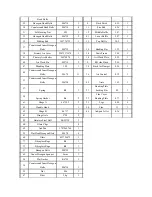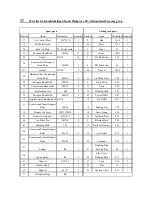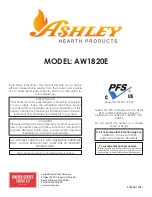
3)
Always refuel onto a good bed of glowing embers.
4)
Never leave the primary air spin wheel open, other than when lighting and re-fuelling the
appliance.
5)
Fuel overloading.
Never overload the firebox. The maximum amount of fuel specified in this
manual should not be exceeded, overloading can cause excess smoke.
6)
Never leave the appliance unattended for long periods and always ensure that the newly charged
logs are burning well before leaving the room.
Wood is a material that contains a great deal of gas (approximately 75 %). The gases are released
when the wood is ignited and heated up. For this reason, it is important that the gases are ignited
quickly after stoking. If the wood just lies smoldering, especially after re-stoking, a lot of smoke is
created, which, in the worst case, may cause an explosive ignition of the gasses, resulting in damage
to the stove.
In order to ignite the gases that are released from the wood, and to keep clear, lasting flames during
the combustion process, it is important to let in the required quantity of oxygen (air supply) at all
times. The setting of the air supply, the method of ignition and the lighting intervals depend on the
draught in the chimney, the wind and weather, the amount of heat required & fuel, etc. This means
that it may take some time before you get to know the correct functioning of the stove under any
given circumstances.
Note: (To load fuel, the door should be opened slowly, avoiding a sudden
rush of intake air, so that smoke does not escape into the room).
Operation with door left open
Operation with the door open can cause excessive smoke. The appliance must not be operated with
the appliance door left open except as directed in the instructions.
Operation with the air controls or appliance dampers open can cause excess smoke. The appliance
must not be operated with air controls, appliance dampers or door left open except as directed in the
instructions.
3.2.2 Use with solid fuel. See figure 4
Lighting
• Slide the top secondary air control to open. Open the primary air control.
• Lay a reasonable quantity of firelighters or rolled up newspapers on the grate, if necessary also use
dry kindling wood. Place a small quantity of solid fuel on top.
• Light the newspaper or firelighters using a long taper and close the door.
• When the fire is burning fiercely, add further fuel.
• When the stove body is hot, close the top secondary air control.
• The burning rate can now be adjusted by the primary air control.
Re-fuelling. See figure 4A & 4B
• Open the primary air control.
• Open the glass door and add fuel. (To load fuel, the door should be opened slowly, avoiding a
sudden
rush of intake air, so that smoke does not escape into the room.).













































